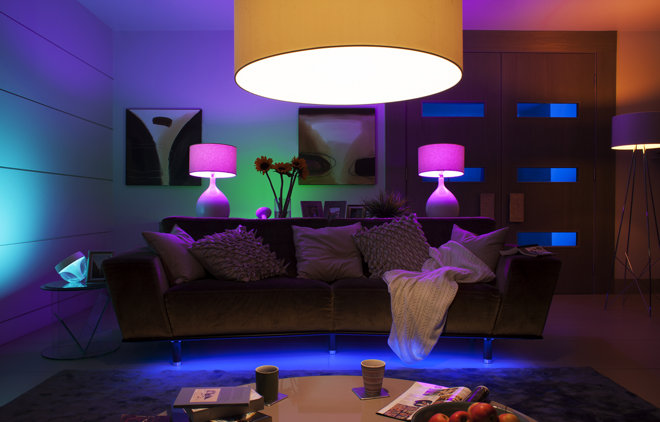Philips' light bulbs are now so smart they know where you are
Bright idea makes Hue light bulbs even smarter

Philips has released an updated to its Hue app, the central point of control for its smart lighting system.
The 2.0 update (or "Hue gen 2" as Philips has been referring to it as) is both an aesthetic and functional one. Looks wise the app has received a substantial overhaul, with large colorful buttons replacing an outdated interface that looked like it was straight out of Apple's original app store.
Users can also now perform a limited set of actions from the widget menu without having to fullscreen the app.
More importantly, however, is the fact that the second generation of Philips' app now makes it easier to group individual lights together into rooms. This functionality did exist in the previous version of the app, but the update makes this feature much more central.
What this means is that if you have a room with a couple of ceiling lights and side lights, all these bulbs can be grouped together under a single room within the app, allowing you to turn on every light with a single command.
Settle into a routine
The new app also adds the option to set automatic routines, allowing you to have your lights automatically dim, brighten, or change color at certain points in the day. This is especially important when a growing body of evidence is suggesting that looking at harsh blue lighting late at night can make it harder to get to sleep than a softer orange.
These routines are not just limited to being controlled by time of day. You are also able to set your app up to perform certain actions when your phone is detected as leaving or entering your house. So it's perfect for flatmates called Fred who ALWAYS SEEM TO BE LEAVING THEIR ROOM LIGHT ON. GOD.
Sign up for breaking news, reviews, opinion, top tech deals, and more.
Anyway.
The new app is set to land imminently on both iOS and Android.
Via Engadget

Jon Porter is the ex-Home Technology Writer for TechRadar. He has also previously written for Practical Photoshop, Trusted Reviews, Inside Higher Ed, Al Bawaba, Gizmodo UK, Genetic Literacy Project, Via Satellite, Real Homes and Plant Services Magazine, and you can now find him writing for The Verge.